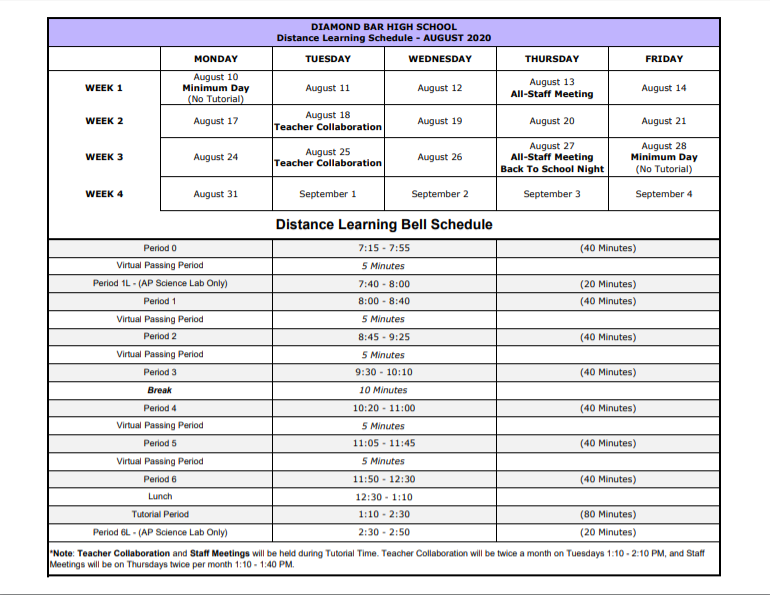Brahmas adapt to virtual semester
As school continues in a virtual setting this semester, students and teachers have varying opinions on this new learning format’s success.
The new school day consists of 40-minute periods with five-minute passing periods between them, and hour-long 1A and 6A classes. It isn’t until after the school day is over, at 12:30 p.m., that there’s a 30-minute lunch break.
“I think having shorter periods restrict the teachers from going more fully in depth with the material in classes while also having more of a rush during quizzes and tests,” junior Rebekah Tsai said via Instagram.
In an effort to make up for the lost 14 minutes of class time each period, the administration also added a 90-minute tutorial period that takes place after lunch ends, giving students time to consult with their teachers or work on projects with classmates.
So far, some students have found this new tutorial period helpful because it allows them to interact with their teachers one-on-one.
“I think it’s even better than traditional classrooms since you get some personal time with teachers,” junior Tony Wu said via text. “Even though it’s pretty short, you get stuff done fast without twenty other students watching.”
As for teachers, they have concerns about the educational experience students will receive from home–specifically during exams. Because students have access to the internet at all times during the school day, cheating has become a significant concern among teachers.
Because it’s hard to tell who is and isn’t cheating, many have decided to give students the option to use their notes during tests to level the playing field. Others still modify the exam questions themselves, opting to make multiple, unique versions of every test while requiring that work be shown.
“I try to circumvent a breach of academic [honesty] by requiring a response which may require cited evidence,” English teacher Connie Chen said via email. “In that case, the student has probably researched some information but has done their due diligence, avoiding plagiarism.”
Another issue with distance learning is the lack of communication between students and teachers. Not only does the shorter period make it harder for students to find time to ask questions, but being online makes it harder for teachers to gauge how students are responding to the material. To make up for this, teachers are checking their emails more frequently than ever and taking full advantage of the tutorial periods to ensure that students can reach them.
“I try my best to answer emails, Classroom Private Comments, and Tutorial Page questions in a timely manner. In addition, students who ask me questions in our meeting chats will hopefully gain clarification,” Chen said. “I’ve noticed quite a few students do not hesitate to privately ask me questions during instruction and I think that’s a strong strategy to have.”
Nevertheless, distance learning still takes away the majority of the interaction and community that a traditional classroom offers.
“One of the best parts of being an art teacher is being able to see students in action whether they are painting or drawing, or creating a 3-D assignment in person,” art teacher Rhoda Dizon said via email. “I love having interesting conversations with my students, and now we are limited on time virtually.”
Elective classes like choir and band, which focus more on group performance than individual work, have faced different distance learning challenges.
“The biggest difficulty for me is the lack of connection with the students. So much of what makes our program a world class music program, is the way the kids connect with each other, the directors and the music,” band director Steven Acciani said via email. “The essential purpose of the music is to create emotional responses, and that has to be on hold for a while. Perfecting our craft is the goal for now.
Your donation will support the student journalists of Diamond Bar High School. Your contribution will allow us to purchase equipment and cover our annual website hosting costs.









